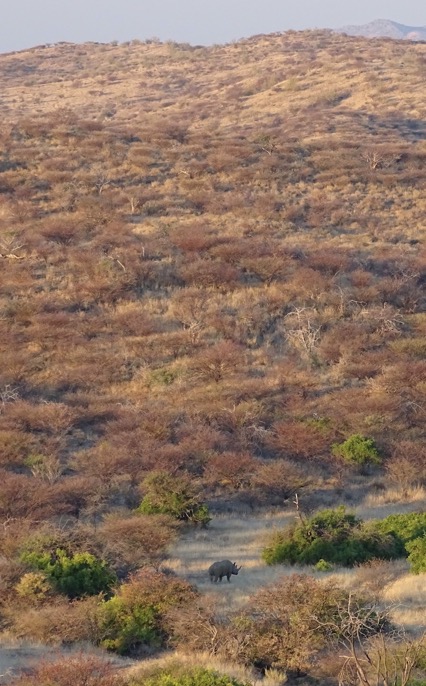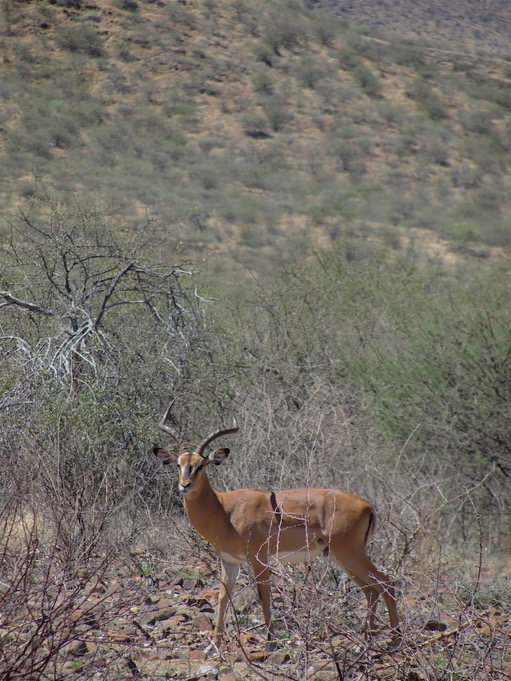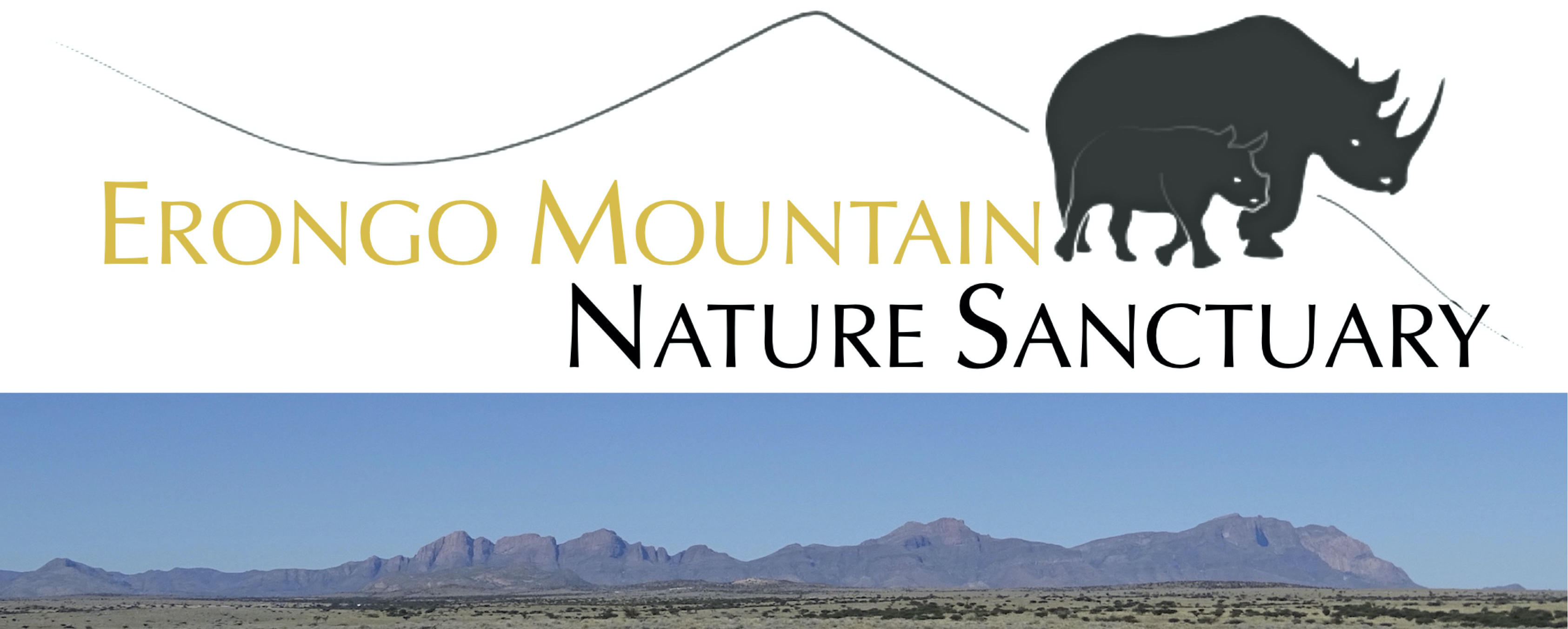After the first Black rhinoceros were reintroduced in the year 2008, the first calves were born in the following years, and moreover new rhinos were also translocated to the Erongo Mountains.


Black rhinoceros and Black-faced impala - two historically indigenous species that were reintroduced by the EMNS
The reintroduction of the Black-faced impala is also a huge success story. Originally, the entire north-west of Namibia reaching down to the Swakop River formed the range of the Black-faced impala. At the onset of the millennium however, the endemic impala sub-species had largely been displaced from its range; merely in the Etosha National Park and on a few isolated (game) farms this beautiful sub-species still occurred. Owing to the efforts of the Erongo Mountain Nature Sanctuary the Erongo Mountains today boast the largest free-roaming population outside of the Etosha National Park.
Since the year 2006 Elephants from the neighbouring Damaraland are wandering into the Erongo Mountains again. At first only bull elephants visited the area; later a small herd roamed the north-western project area for a few years.
The endemic Hartmann’s Mountain Zebra occurs in very healthy numbers in the Erongo Mountains. These frugal animals occur in family groups of 5 to 8, resting in the rugged mountain slopes or kopjes during the day to move down into the valleys for grazing in the evening. The Damara Dik Dik, an endemic antelope species, stays in the thickest undergrowth along the riparian forest of dry river beds or in matted thorn-bush thickets.
Hartmanns Mountain Zebra - characteristic mountain game in the Erongo![]()

![]()

![]()
The majestic Greater Kudu and the unassuming Gemsbok are prevalent in the Erongo Mountains; furthermore Eland, Leopard, Warthog and Springbok can be encountered. The rocky ranges are the ideal habitat of the Klipspringer and along the dry riverbeds and in the valleys Duiker and Steenbok occur. While Eland only occur in the lusher north-eastern parts, Giraffe can also be found in good numbers in the sparser south and west of the Erongo Mountains and its forelands.
There is also a variety of smaller mammals to be seen in the Erongo. A peculiar example is the curious Black mongoose (Galerella nigrata), an endemic sub-species to the Slender mongoose, which occurs in very healthy numbers in the granite realms of the Erongo. Furthermore, other species like the Ground squirrel, African wild cat, Lynx and Genet occur in the area. Even the rare Cape fox and Bat-eared fox can be encountered by the lucky observer.
Leopards are regularly observed owing to the once again pristine natural surroundings
Not least a very rich bird life inhabits the Erongo Mountains. On the one hand 7 (Namibian) endemic species occur in the Erongo Mountains - as for example the Hartlaub francolin, the White-tailed shrike or the Damara rock-runner -, on the other hand a number of interesting migratory and water birds visit the Erongo, depending on the season.
Monteiros hornbill - one of the 7 (Namibian) endemic bird species in the Erongo Mountains


